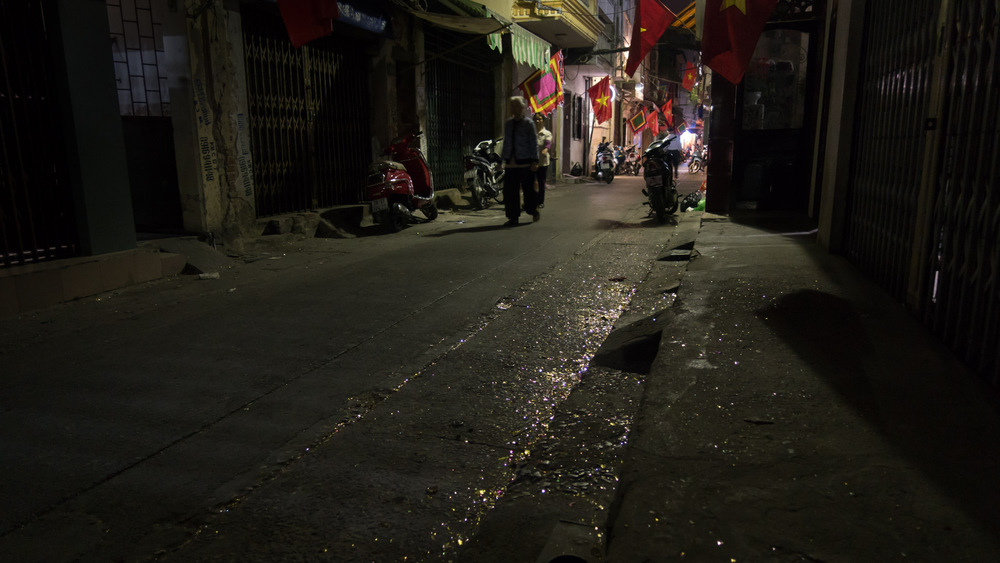Chúc Mừng Năm Mới!
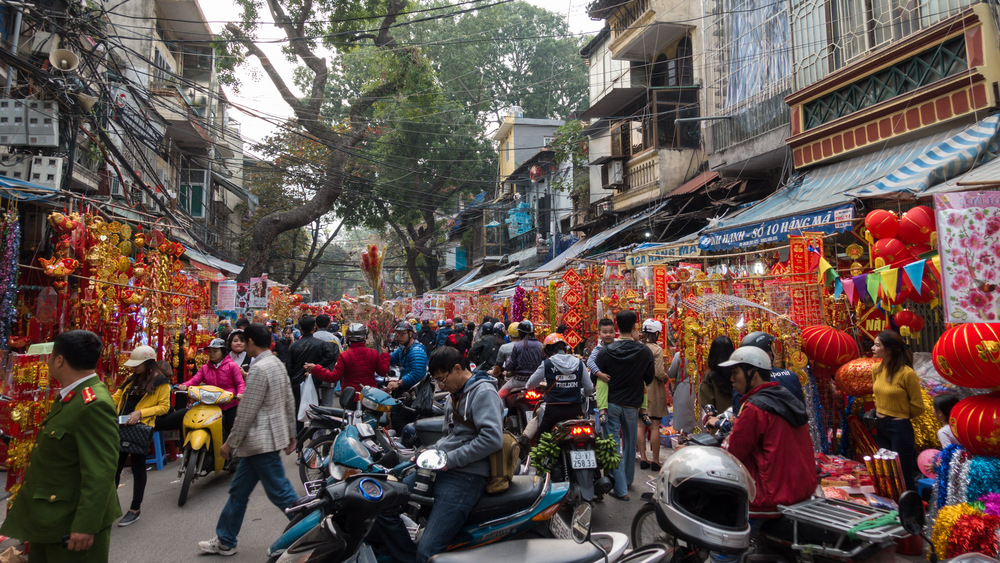
Tết is Vietnamese New Year, which coincides with Chinese Lunar New Year. This year, Tết fell on January 28, and all of Hanoi was covered with banners proclaiming Chúc Mừng Năm Mới! — “Happy New Year!”
In the days leading up to Tết, Hanoi was a flurry of activity. Whole streets were turned into Tết markets, where each storefront sold a different selection of lanterns, sparkly flowers, red hanging decorations, firecrackers, candy, and red envelopes. The streets were packed with people and motorbikes, and parked motorcycles turned the normally single lane roads into two narrow corridors of people and vehicles trying not to run each other over as they looked at all the things for sale.
We saw many many ornamental orange trees and pink-blossomed peach trees out for delivery via motorbike. Sometimes they would be miniature potted plants, about a foot or two high, held on the lap of the person riding pillion behind the rider. Other times, it would be four of those same plants, all precariously balanced then tied to the back of the seat. And other times, it would be a six-foot tall tree spanning about four feet, tied down on a platform behind the rider; in these cases, it looked like a tree rather than a person was taking the motorcycle for a ride. The trees were installed in the entrance of hotels, businesses, temples, and homes, and are meant to bring good luck and prosperity. After Tết, if the building has a free plot of land, then the tree will be planted on the property. Otherwise, the tree will be returned to the seller and rented or purchased again the following year.
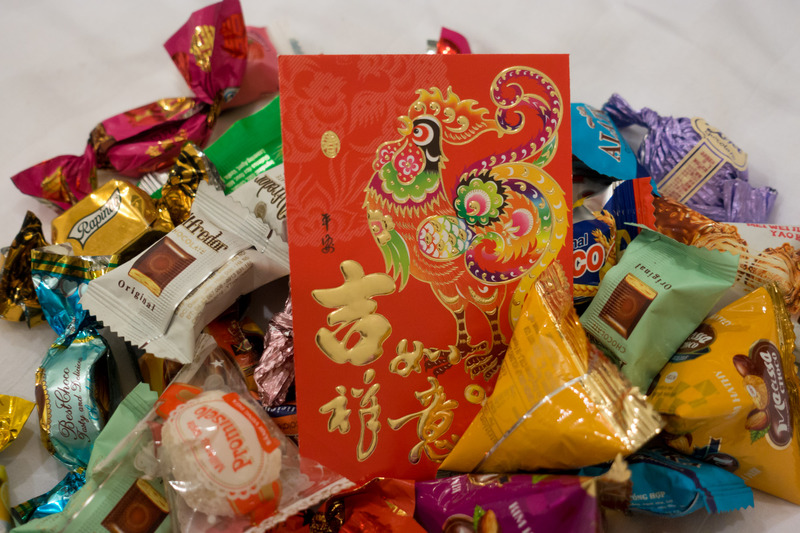
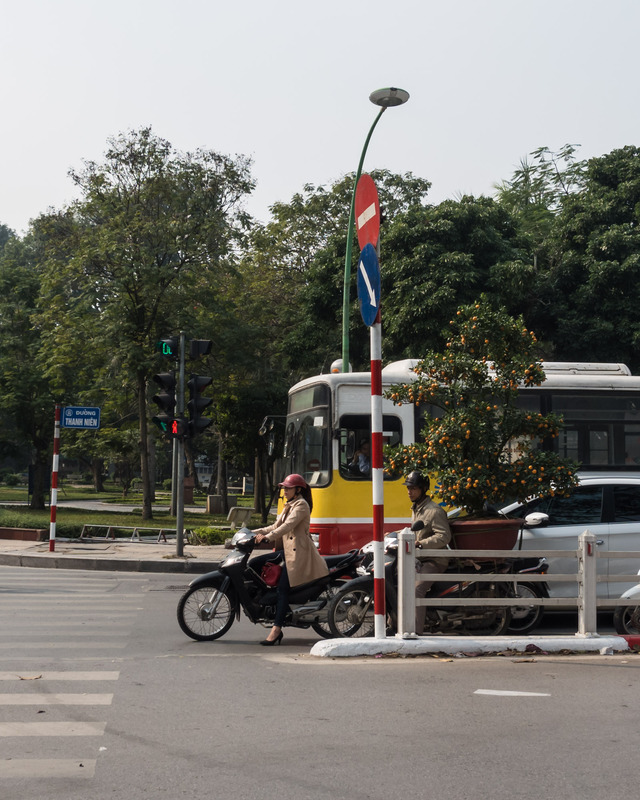
On the eve of Tết, many people were out en masse, particularly around Hoan Kiem. There were at least four live music venues playing all around the edge of the lake, including one female pop star whose music we’ve since heard playing in coffee shops. People were spending time with family and friends, listening to music, taking pictures across the lake, and enjoying themselves. At the stoke of midnight, small pyrotechnics went off around the lake. There were no large fireworks as in previous years though, because the government requested that provinces refrain from expensive displays; the surplus money will be directed to disaster-hit provinces.
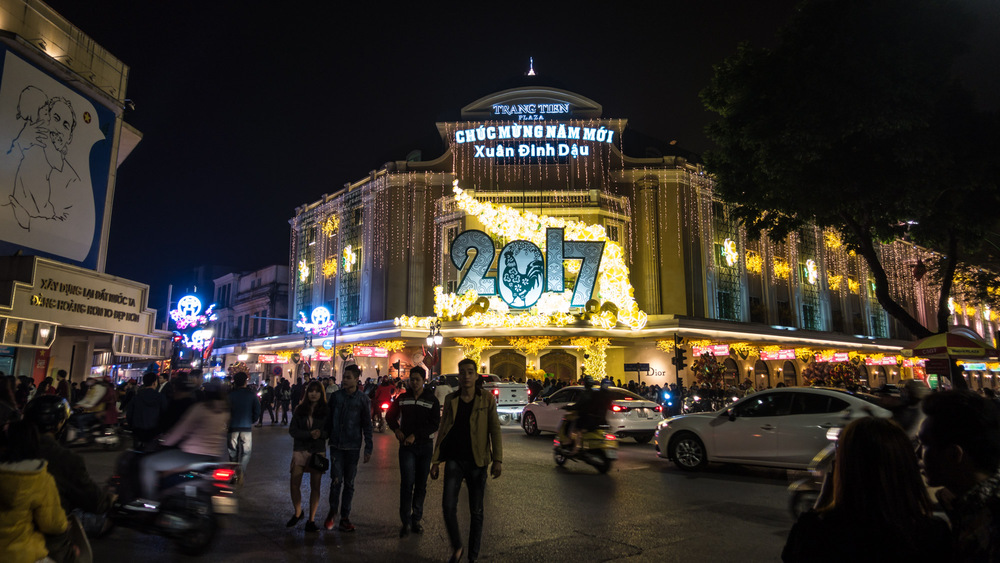
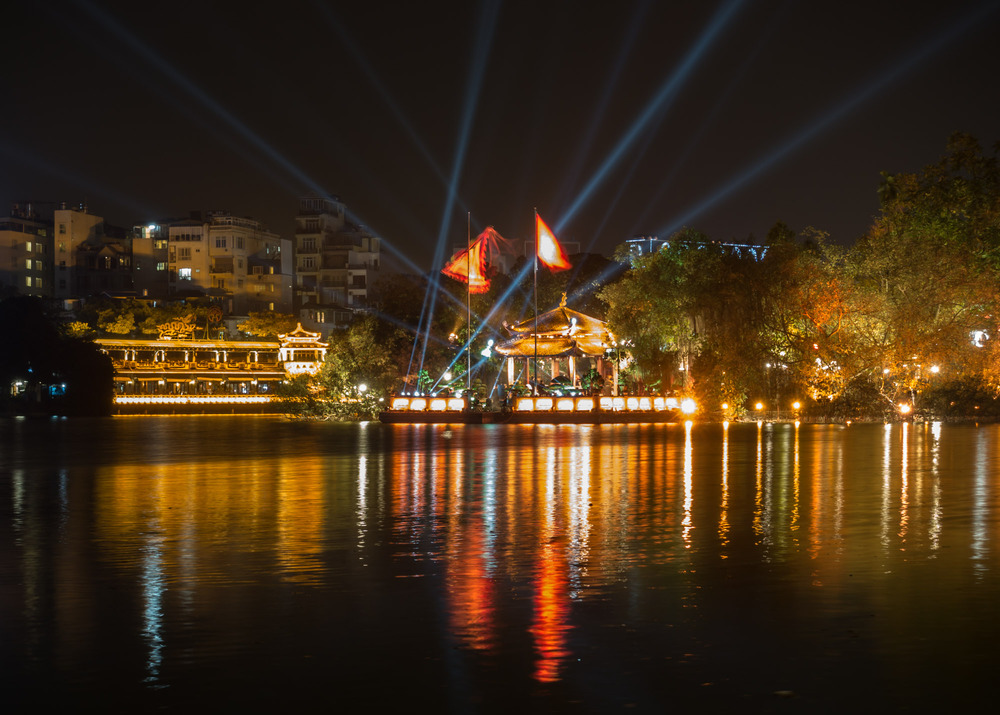
The whole city, with the exception of some restaurants that catered to tourists, shut down for the days following Tết. Vietnamese government workers got the entire following week off, and for everyone else, the amount of time off seemed to vary based on business discretion. Traditionally, the first day of Tết is reserved for visiting family, and many Vietnamese travel back to their hometowns for that day and the days after.
For several days after Tết, we noticed confetti scattered on some of the streets, leftover from the celebrations. Now eight days after Tết, Hanoi has finally started to feel like the same bustling city we saw when we first arrived, complete with shops open for all hours on every block.
